After proper bedding period and my initial test, it was time for proper Alpine test… and it didn’t go well.
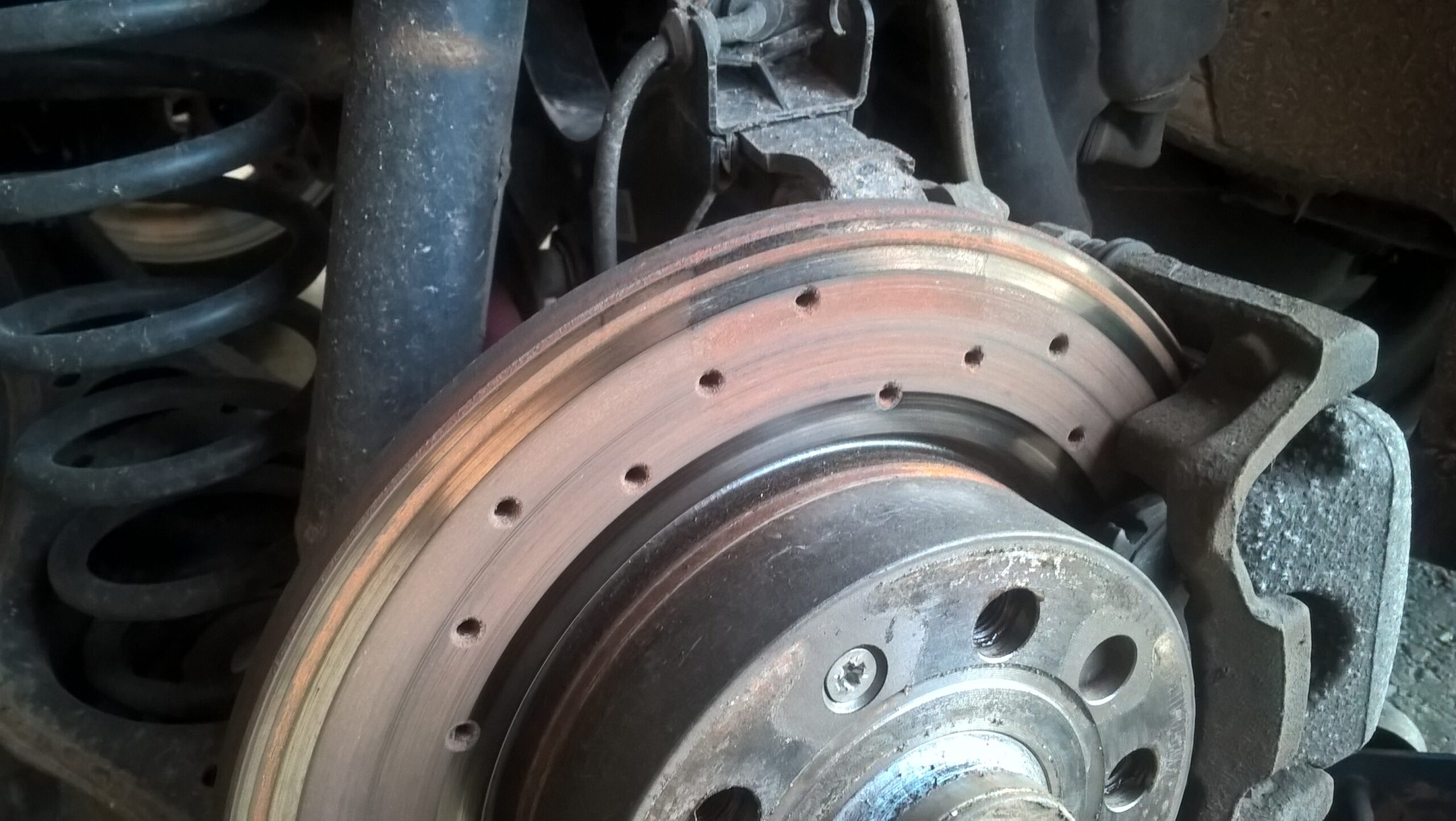
RESULTS
- optimal temperature 300°C
- decent pads for low lands and city traffic
- brake pads fade at around 350°C
- friction material disintegrate and become powder or burnt chunks
- I’ve never seen brake pad falling apart due high temperatures
Jurid seems to not exist, no datasheets, no details. What I’ve found so far is that they are Garrett/Honeywell (known for turbochargers). I’m always sceptical about companies who tries to do all and nothing right.
Despite my scepticism, my reasoning was…Jurid is on TGV trains, it is cheap…why not to try. After my first test…well my estimate/judgement is based on years of failures, broken body parts, pain and racing or pushing hard various things with wheels…I had bad feeling.
Some thoughts on my previous tests
- Standard OEM VW brake pads (usually ATE) fade at about 250°C. Once, temperature reaches friction material capacity (at around 300°C) it burns the pad and doesn’t brake anymore. If you don’t push it too hard, it can be cleaned with drilled/grooved rotors and brakes again.
- Ferodo Premium aftermarket pads; optimal temperature 300°C; fade at around 450°C (view my test) and they cost same money as OEM pads !!! If used with drilled/slotted discs, they are the cheapest solution. I really pushed those pads hard but they hold like racing pads !!!
- Jurid White ceramic pads optimal temperature 300°C; disintegrate at around 450°C. They have poor stopping power once they got hot and you don’t need hard race-style braking. It is just long downhill section in mountains and you’re without brakes – deadly in mountains on front brakes.
Picture is worth thousand words
Once, friction material disintegrate it starts to stick to the disc. Even drilled disc didn’t clean the pad!
Burnt friction material – even drilled holes in disc didn’t clean the pad.
Partially burnt friction material; middle section disintegrated.
Both pads were same just few kilometres ago. I should have to replace them during the last repair of stuck handbrake cable. Inside pad (piston side of VW floating calliper) just disappeared, disintegrated, became powder or I have no idea what happened. Most of pad is on my alloy rims 😀
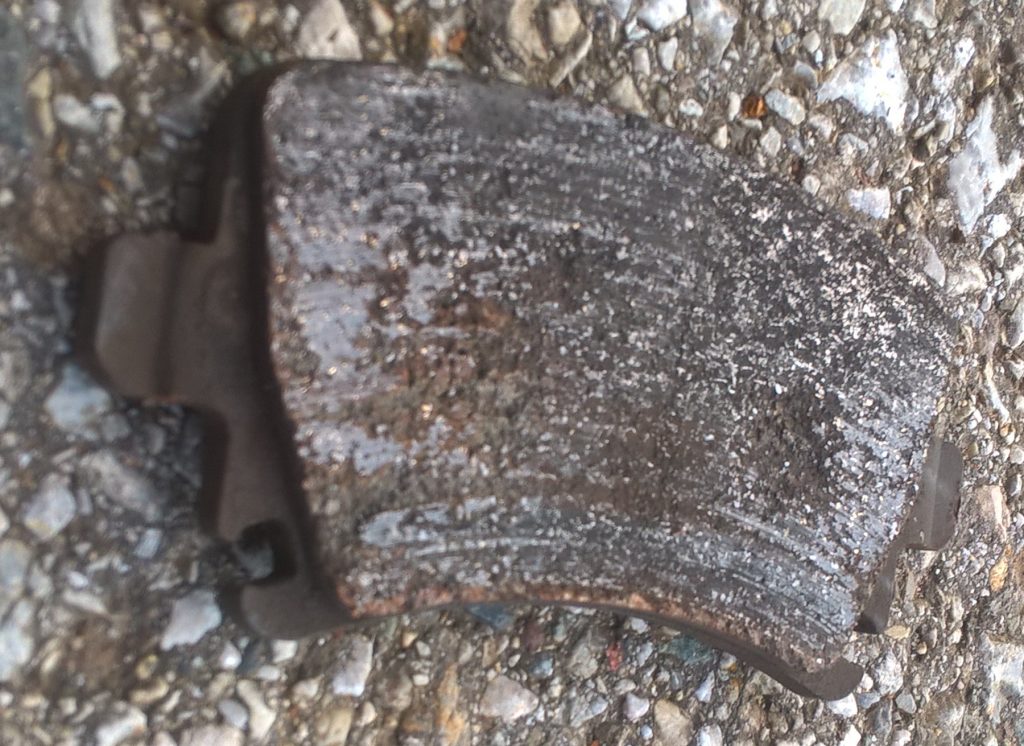
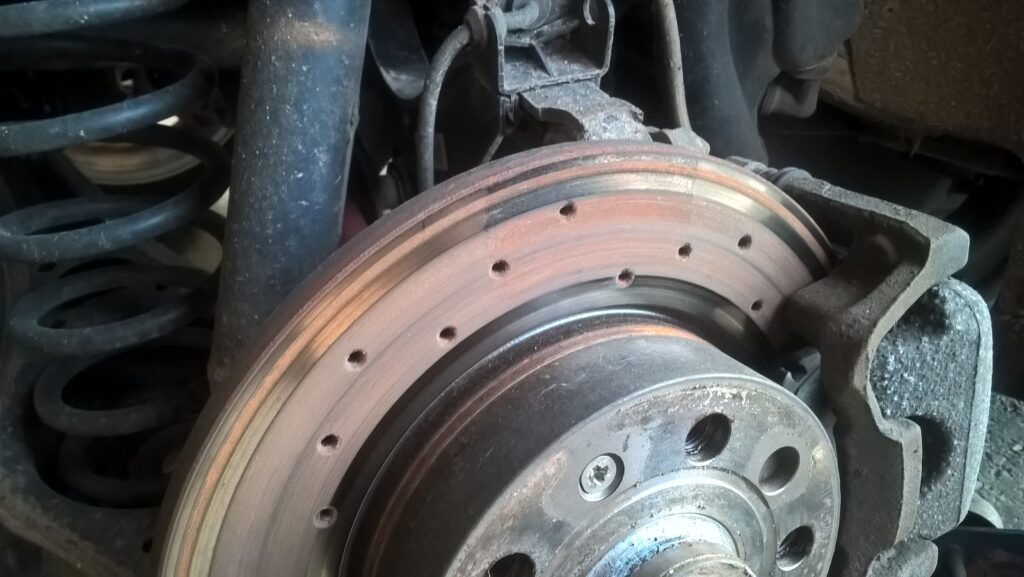
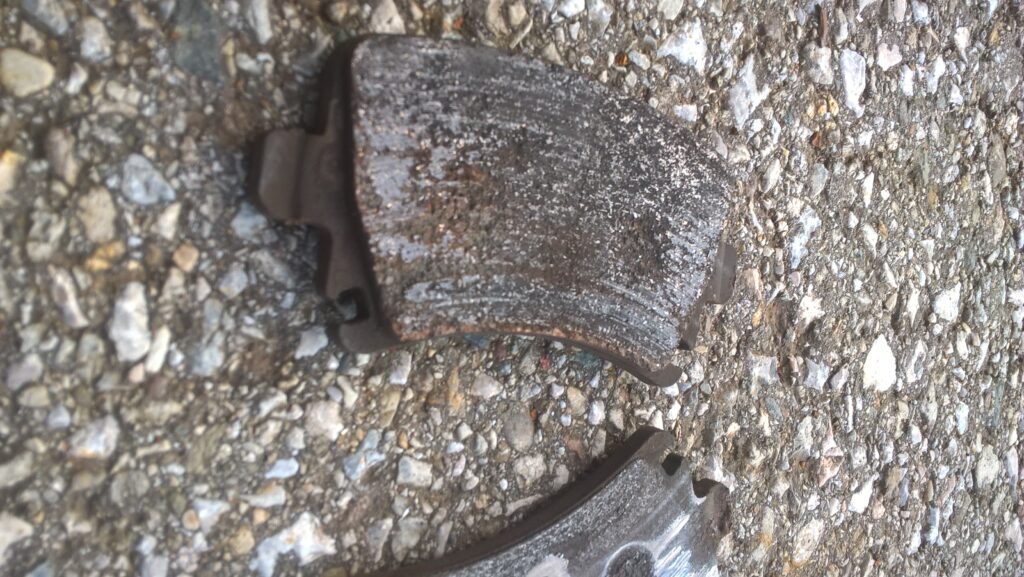
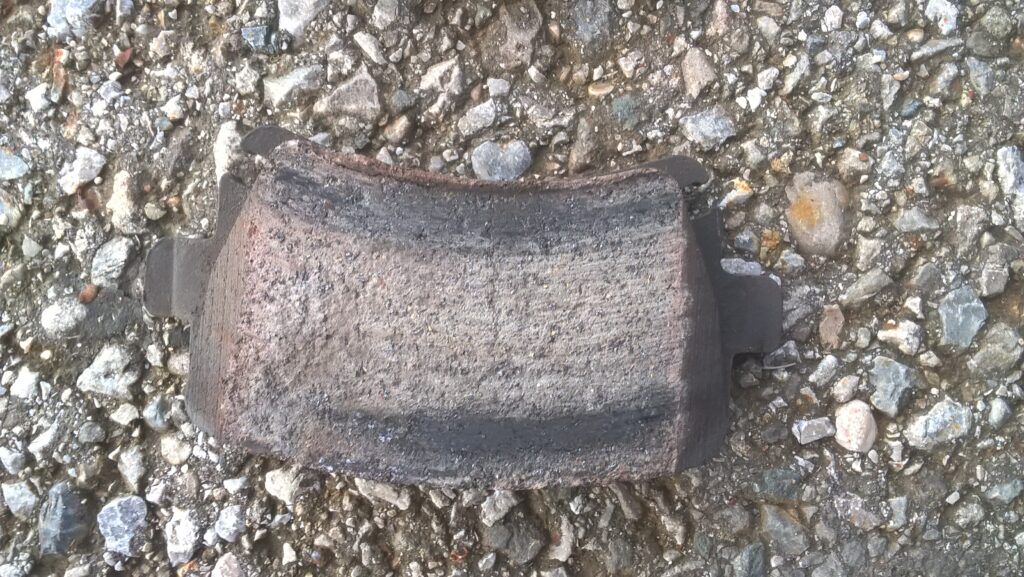
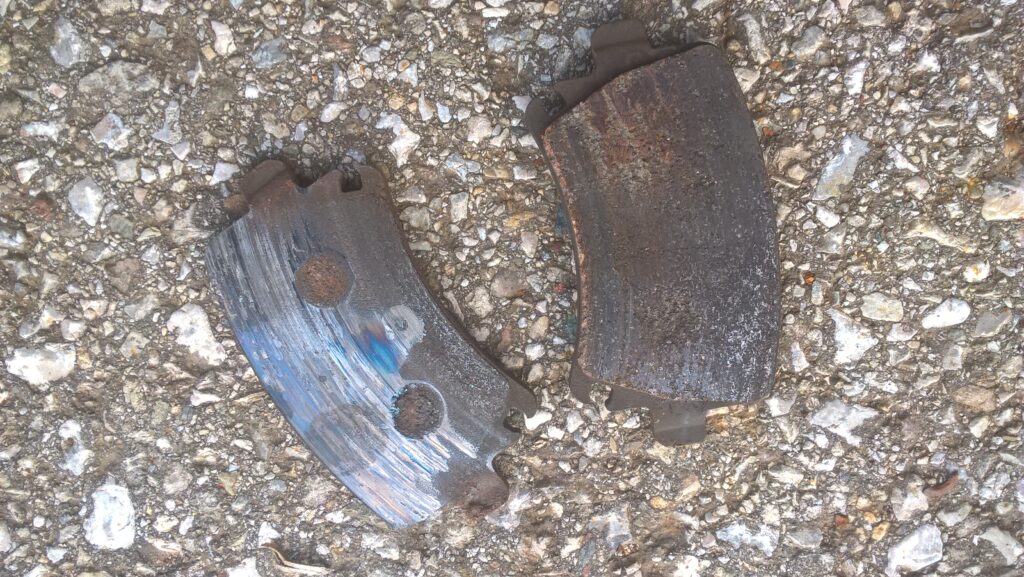
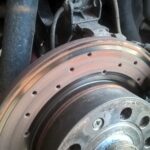
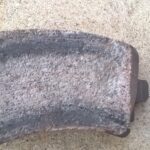
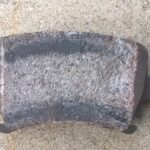
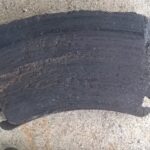
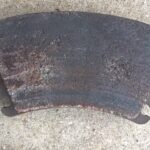
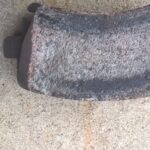
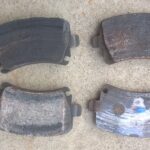
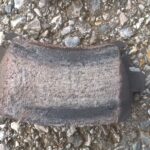
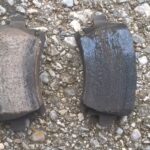
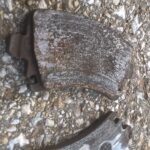
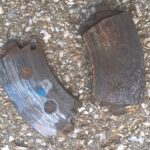
Sorry to ask … But are you stu.pid?
Speak shi.it about Jurid, but in pictures the brake pads you mount on car are Bembo???
I apologize, I should mention for you smart ones that you usually replace damaged pads with new ones.
I see it is confusing for you to see new pads installed along the old damaged one. Will make it simple for you.
I guess you are that same genius commenting on YT video as well.